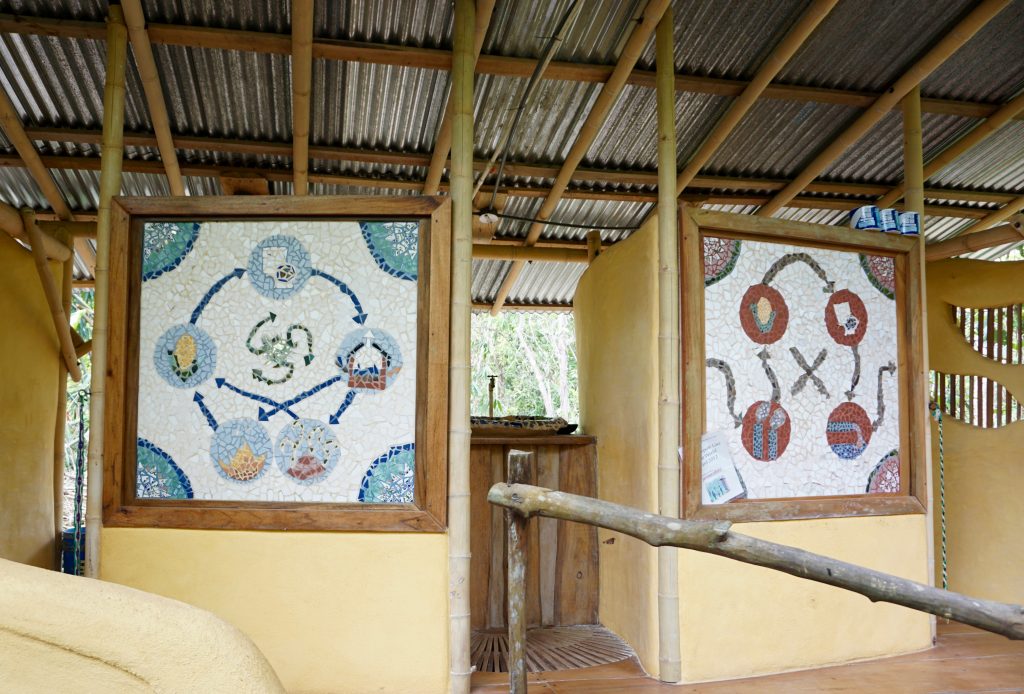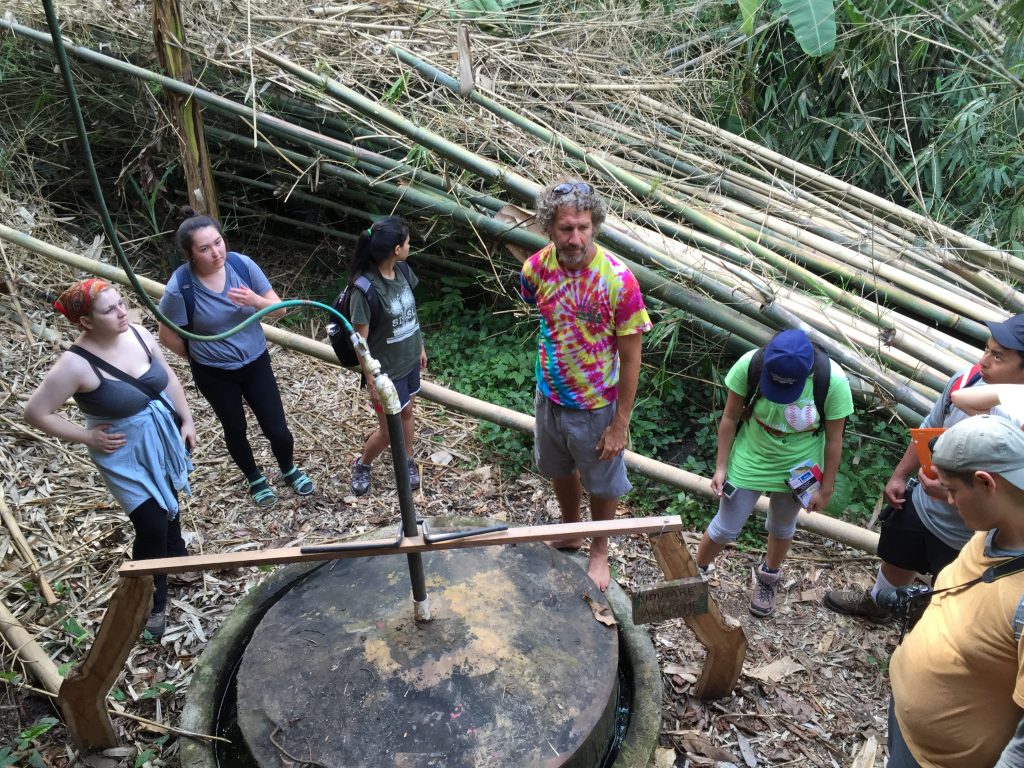Growing up in a suburban community in Southern California, I had always believed that destroying nature was a consequence of our standard of living.
It was our third day in Costa Rica, by then we had already seen a tremendous amount of biodiversity on the car ride up to Mastatal, learned about different plants that grew well in Costa Rica in Siempre Verde, and even helped out on the farm. Those experiences all inspired me to one day return to Costa Rica to experience the beauty of Costa Rica, but our visit to Rancho Mastatal inspired me to come back to Mastatal not just for tourism but to actually pick up a new way of life.
Our first visit to Rancho Mastatal began with Tim (the founder) talking about how he and three other people first started the ranch. He explained that he became disillusioned with the corporate world after working for an agrobusiness for many years. He came to Mastatal to protect the rainforest and to inspire others to create sustainable business models. It was the first time I had ever saw humans one with nature without removing modern comforts of technology such as electricity, plumbing, sewage, and even internet. I had always seen a divide between urban human life and wildlife. I had believed that if humans tried to build houses in forests, grasslands, and wetlands, they would destroy the plants and animals they lived among. My visit to Mastatal debunked that whole anthropocentric view I had. With the exception of the concrete floors, nails, screws, nuts, bolts, and metal roofing, the buildings were all made out of locally sourced sustainable materials. The walls were made of wattle and daub, and reinforced with bamboo.
Growing up in a suburban community in Southern California, I had always believed that destroying nature was a consequence of our standard of living.

Tim taught me that we can minimize our impact to the point where we are a part of nature again without lowering our standard of living. The toilets here still used plumbing and the sinks still worked, but instead of brushing the biosolids aside as sewage, the toilets here convey the biosolids into a biodigester. The biodigester then separates the methane from the biosolids while steadily treating the biosolids to come out as effluent for the banana trees.
Local Ticos, foreign volunteers, students, and apprentices all helped develop Rancho Mastatal into what it is today.  The tour around the ranch and Tim’s life story inspired me to one day come back and join the Rancho Mastatal community. If time allows, I hope to return one day to become an apprentice, learning the skills necessary to not only help myself, but also my friends, family, and community to use simple technologies such as biodigesters and composting toilets to reduce one’s environmental impact. Hopefully I will have the opportunity to design a home either for myself or a friend and apply the skills I learn as an apprentice to the design. I will encourage others to use sustainable materials such as bamboo in construction and help others with their personal retrofitting projects.
The tour around the ranch and Tim’s life story inspired me to one day come back and join the Rancho Mastatal community. If time allows, I hope to return one day to become an apprentice, learning the skills necessary to not only help myself, but also my friends, family, and community to use simple technologies such as biodigesters and composting toilets to reduce one’s environmental impact. Hopefully I will have the opportunity to design a home either for myself or a friend and apply the skills I learn as an apprentice to the design. I will encourage others to use sustainable materials such as bamboo in construction and help others with their personal retrofitting projects.

Written by Kevin Li
